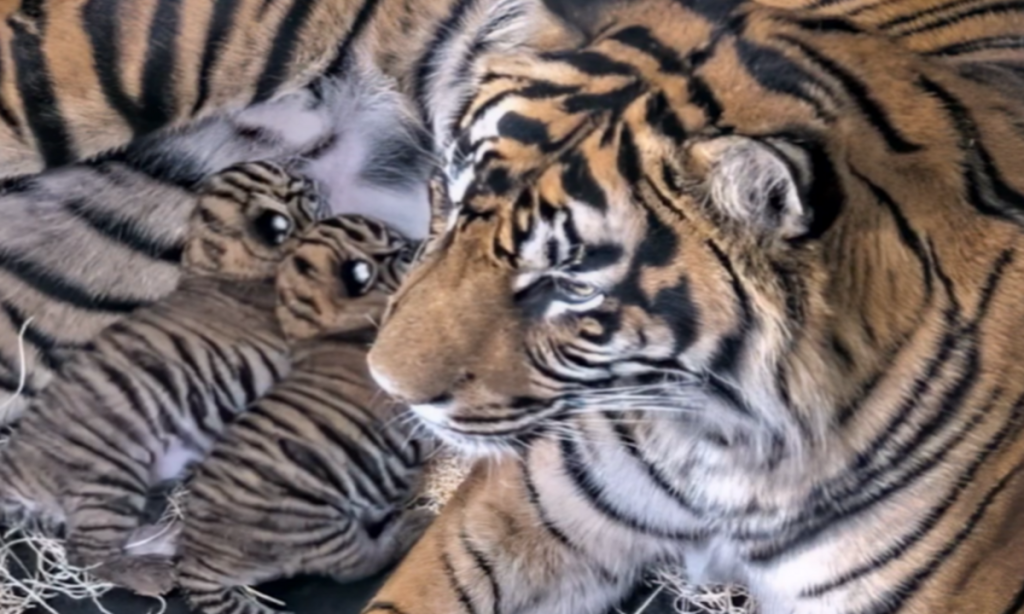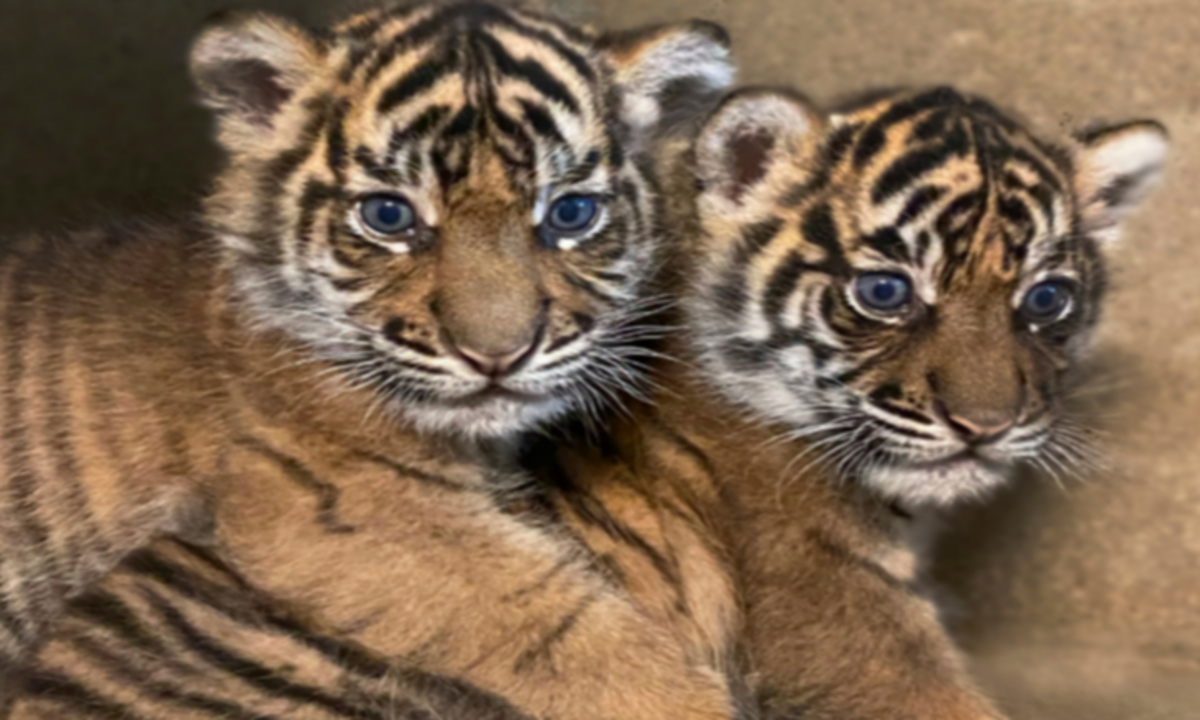The San Diego Zoo Safari Park has welcomed a critically endangered Sumatran tiger cub, bringing hope for the future of the species.
Born on August 23, 2024, to first-time mother Jillian, the cub’s arrival is a major success for conservation efforts aimed at protecting these rare big cats. With only 400 to 600 Sumatran tigers left in the wild, this birth is seen as a significant step in preserving the species.
A Special Arrival: The Birth of the Cub
Jillian, a 7-year-old Sumatran tiger, gave birth to the cub in a private den at the San Diego Zoo Safari Park. Wildlife care specialists have been closely monitoring both Jillian and her cub, ensuring that they are healthy and bonding well.
According to zoo officials, Jillian has shown excellent maternal instincts, keeping her cub warm, well-fed, and protected. The newborn is active and vocal, which are positive signs of a healthy young tiger in San Diego Zoo.
Why This Birth Is Important
Sumatran tigers are one of the most endangered tiger species in the world. Due to deforestation, illegal hunting, and human-wildlife conflict, their population has drastically declined. The birth of this cub is part of a global effort to help increase their numbers.
The San Diego Zoo Safari Park participates in the Sumatran Tiger Species Survival Plan (SSP), a breeding program organized by the Association of Zoos and Aquariums (AZA). This program ensures that tigers in zoos remain genetically healthy and can contribute to conservation efforts.
“Every Sumatran tiger cub born in human care represents a step toward protecting this species from extinction,” said a zoo spokesperson.
What Happens Next? The First Few Months of the Cub’s Life
For now, Jillian and her cub will remain in their private den, away from public view. This allows mother and cub to bond without any disturbances.
In the wild, tiger cubs stay close to their mothers for about two years, learning essential survival skills. Similarly, at the zoo, Jillian will nurture and guide her cub as it grows.
At around 10 to 12 weeks old, the cub is expected to explore the outdoor habitat for the first time. Until then, wildlife specialists will continue monitoring its growth and development, ensuring that it is strong enough to explore its surroundings.
Conservation Efforts: How People Can Help
The biggest threats to Sumatran tigers are habitat loss and poaching. As forests in Indonesia and Sumatra are cleared for palm oil plantations, tigers lose their natural habitat.
People can help protect these rare tigers by:
Supporting sustainable palm oil products – Look for labels that say “Certified Sustainable Palm Oil (CSPO)” to avoid products that contribute to deforestation.
Raising awareness – Educate others about the threats facing Sumatran tigers and why conservation efforts matter. Donating to wildlife conservation programs – Organizations like the San Diego Zoo Wildlife Alliance work to protect endangered species and their habitats.
A Future for Sumatran Tigers
The birth of this cub gives hope for the survival of Sumatran tigers, but conservation efforts must continue. The San Diego Zoo Safari Park remains committed to its mission of protecting endangered species through research, education, and global conservation programs.
Visitors to the park will have the chance to see the cub once it is old enough to venture outdoors, and updates will be shared on the zoo’s social media platforms.
“Every birth is a victory for conservation,” said a zookeeper. “This little cub represents the future of Sumatran tigers, and we are excited to watch it grow.”
Disclaimer—Our team has checked this article to ensure its accuracy and eliminate any misinformation. We are committed to providing clear and reliable information for our readers.


